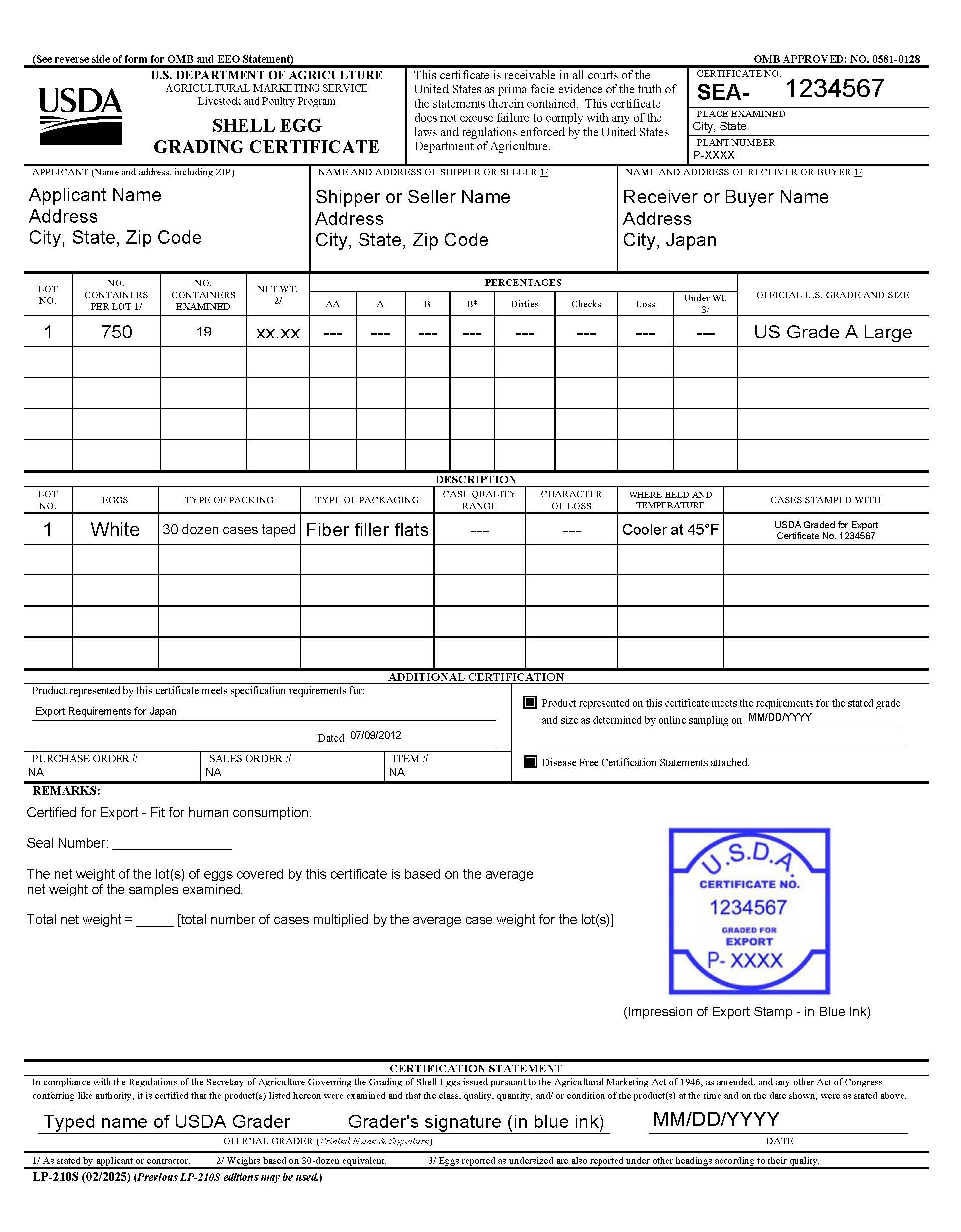Export Requirements for Japan – Shell Eggs
July 09, 2012
Ineligible Products
Consult the Shell Egg Export Restrictions Dashboard prior to certifying any shipments.
Prerequisites
All Policy and General Procedures Requirements listed in General Export Certification must be met unless otherwise noted in this webpage.
Purpose
This instruction outlines the certification requirements for shell eggs as prescribed by Japan.
General Procedures
Grade Requirements - The shell eggs processed under the supervision of the USDA grader must be graded and certified as U.S. Grade A or better as outlined in the United States Standards, Grades and Weight Classes for Shell Eggs (AMS 56).
Transport Unit - The transport unit must be sealed (plant/company seal) prior to departure from the processing facility. The seal(s) number must appear on the Form LP-210S certificate issued covering the shipment. The Grader must be present and verify sealing of shipping unit.
Transloading - USDA must visually verify condition of the final transport unit for all eggs destined for Japan. If the transport unit at origin is not the final transport unit, transloading must take place following instructions in General Export Certification Requirements.
Note: For Japan transloading Grader must be present and verify sealing of shipping unit.
Certification - When completing the certificate (Form LP-210S) the following information must be included:
- The statement ‘Certified for Export – Fit for Human Consumption’
- Company seal number
- The following net weight declaration shall be listed in the remarks section:
- The net weight of the lot(s) of eggs covered by this certificate is based on the average net weight of the samples examined. [Total net weight = total number of cases multiplied by the average case weight for the lot(s)].


